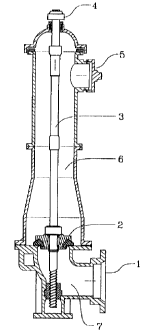Some of the information on this Web page has been provided by external sources. The Government of Canada is not responsible for the accuracy, reliability or currency of the information supplied by external sources. Users wishing to rely upon this information should consult directly with the source of the information. Content provided by external sources is not subject to official languages, privacy and accessibility requirements.
Any discrepancies in the text and image of the Claims and Abstract are due to differing posting times. Text of the Claims and Abstract are posted:
| (12) Patent: | (11) CA 2394034 |
|---|---|
| (54) English Title: | MAINTAINING READINESS IN FIRE HYDRANTS |
| (54) French Title: | METHODE PERMETTANT D'ASSURER LA DISPONIBILITE DES BORNES D'INCENDIE |
| Status: | Deemed expired |
| (51) International Patent Classification (IPC): |
|
|---|---|
| (72) Inventors : |
|
| (73) Owners : |
|
| (71) Applicants : |
|
| (74) Agent: | BORDEN LADNER GERVAIS LLP |
| (74) Associate agent: | |
| (45) Issued: | 2006-02-21 |
| (22) Filed Date: | 2002-07-18 |
| (41) Open to Public Inspection: | 2003-02-24 |
| Examination requested: | 2002-11-28 |
| Availability of licence: | N/A |
| (25) Language of filing: | English |
| Patent Cooperation Treaty (PCT): | No |
|---|
| (30) Application Priority Data: | ||||||
|---|---|---|---|---|---|---|
|
Fire hydrants are protected from freezing by including potassium formate, preferably at least 10% by weight, in the water enclosed in them during nonuse.
Des bornes-fontaines sont protégées du gel par l'incorporation de formiate de potassium, de préférence au moins 10 % en poids, dans l'eau qui y est contenue pendant le non-usage.
Note: Claims are shown in the official language in which they were submitted.
Note: Descriptions are shown in the official language in which they were submitted.

For a clearer understanding of the status of the application/patent presented on this page, the site Disclaimer , as well as the definitions for Patent , Administrative Status , Maintenance Fee and Payment History should be consulted.
| Title | Date |
|---|---|
| Forecasted Issue Date | 2006-02-21 |
| (22) Filed | 2002-07-18 |
| Examination Requested | 2002-11-28 |
| (41) Open to Public Inspection | 2003-02-24 |
| (45) Issued | 2006-02-21 |
| Deemed Expired | 2016-07-18 |
There is no abandonment history.
| Fee Type | Anniversary Year | Due Date | Amount Paid | Paid Date |
|---|---|---|---|---|
| Registration of a document - section 124 | $100.00 | 2002-07-18 | ||
| Application Fee | $300.00 | 2002-07-18 | ||
| Request for Examination | $400.00 | 2002-11-28 | ||
| Registration of a document - section 124 | $50.00 | 2003-01-21 | ||
| Maintenance Fee - Application - New Act | 2 | 2004-07-19 | $100.00 | 2004-06-15 |
| Maintenance Fee - Application - New Act | 3 | 2005-07-18 | $100.00 | 2005-06-10 |
| Final Fee | $300.00 | 2005-12-09 | ||
| Maintenance Fee - Patent - New Act | 4 | 2006-07-18 | $100.00 | 2006-06-07 |
| Maintenance Fee - Patent - New Act | 5 | 2007-07-18 | $200.00 | 2007-06-07 |
| Maintenance Fee - Patent - New Act | 6 | 2008-07-18 | $200.00 | 2008-06-10 |
| Maintenance Fee - Patent - New Act | 7 | 2009-07-20 | $200.00 | 2009-06-19 |
| Maintenance Fee - Patent - New Act | 8 | 2010-07-19 | $200.00 | 2010-06-17 |
| Maintenance Fee - Patent - New Act | 9 | 2011-07-18 | $200.00 | 2011-06-08 |
| Maintenance Fee - Patent - New Act | 10 | 2012-07-18 | $250.00 | 2012-06-14 |
| Maintenance Fee - Patent - New Act | 11 | 2013-07-18 | $250.00 | 2013-06-12 |
| Maintenance Fee - Patent - New Act | 12 | 2014-07-18 | $250.00 | 2014-06-25 |
Note: Records showing the ownership history in alphabetical order.
| Current Owners on Record |
|---|
| CLEARWATER INTERNATIONAL, L.L.C. |
| Past Owners on Record |
|---|
| CLEARWATER, INC. |
| HALLMAN, JOHN H. |
| HYLAND, WILLIAM |